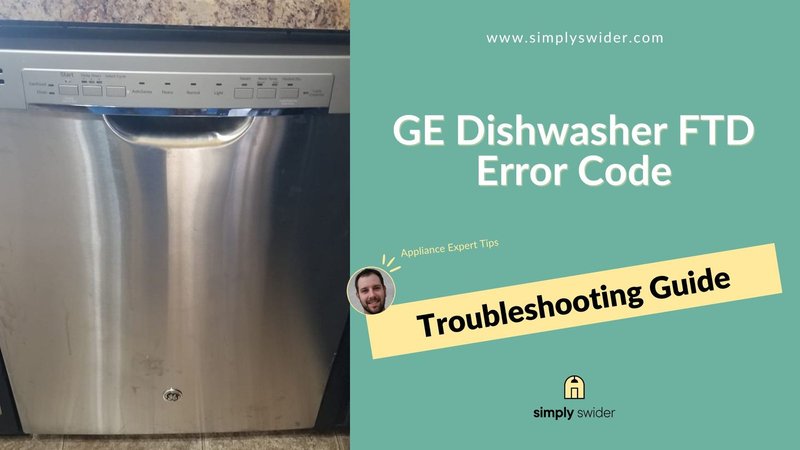
Here’s the deal: the Error Code F2 on your GE dishwasher is a signal from your appliance that there’s a drainage problem. Think of it like a clogged sink in your kitchen; when the water can’t drain out properly, it starts piling up, causing a bit of a mess. In your dishwasher’s case, this error code is its way of telling you there’s an issue preventing the water from evacuating as it should. Addressing this isn’t too complicated, and with a little guidance, you’ll have your dishwasher back in working order in no time!
Understanding Error Code F2: A Deep Dive
So, what causes this drainage issue, and why does your dishwasher decide to flash the F2 error code at you? Let’s break it down. At its core, this error usually means there’s some hindrance in the dishwasher’s ability to remove water effectively. This can be due to a block in the drain hose, a malfunctioning drain pump, or perhaps even a kink in the hose itself. Just like how a garden hose gets obstructed when it’s molded the wrong way, your dishwasher’s drain system can experience similar hiccups.
Imagine your dishwasher like a small, intricate network of pipes and pathways, all designed to usher dirty water out efficiently. When one of these pathways gets blocked—be it with food particles, debris, or even a poorly installed hose—it can throw the whole system off balance. Thus, your dishwasher raises a flag (the F2 code) to get your attention.
The consequences of ignoring this code can be frustrating. Not only will your dishes not get cleaned properly, but standing water can also lead to unpleasant odors and even mold growth over time. Plus, excess water can spill out, potentially causing water damage in your kitchen. It’s crucial to address the issue sooner rather than later to keep these headaches at bay.
Step-by-Step Guide to Fix the F2 Error
Now that we know what the F2 error means, let’s talk about how you can fix it. First things first: safety is paramount, so be sure to turn off the power to your dishwasher before diving in. Think of this as putting on gloves before handling anything dirty or potentially hazardous. Once you’re sure the coast is clear, take a look around.
Start by inspecting the drain hose. Is it kinked or bent in a way that might prevent water from flowing freely? Straightening it out could be the simple fix you need. Next, check for any obstructions. Detach the hose and see if there are any blockages—like food bits or other debris—clogging the way. Imagine the hose as a straw; sometimes things get lodged, and a clear pass-through is all it needs.
If the hose appears clear and straight but you’re still encountering problems, the issue might lie deeper within the drain pump. This part acts like the heart of your dishwasher’s drainage system, pumping out water to keep everything flowing smoothly. If it’s not working right, you might need to consider having it replaced by a professional. Remember, if ever in doubt, it’s okay to call in an expert—the last thing you want is to cause more damage while trying to fix things.
Preventing Future F2 Errors
Once you’ve resolved the current issue, preventing future occurrences is key. A little bit of regular maintenance can go a long way in keeping that F2 code at bay. Just like you might clean out your car’s air filter to keep it running smoothly, cleaning your dishwasher’s filter and drains regularly can prevent clogs. Make it a habit to rinse off excess food from your dishes before loading them into the appliance.
Another handy tip is to occasionally run an empty cycle with a cup of vinegar. This can help break down any residue inside the machine, ensuring that everything runs like clockwork. Think of it as a detox for your dishwasher.
Lastly, always be gentle with your appliance. Avoid overloading it as this can strain the internal components, leading to more errors and breakdowns. Consider your dishwasher an important member of your household, and taking good care of it will ensure it takes care of your cleaning needs in return. By following these preventative tips, you can keep your dishwasher running smoothly and error-free for years to come.